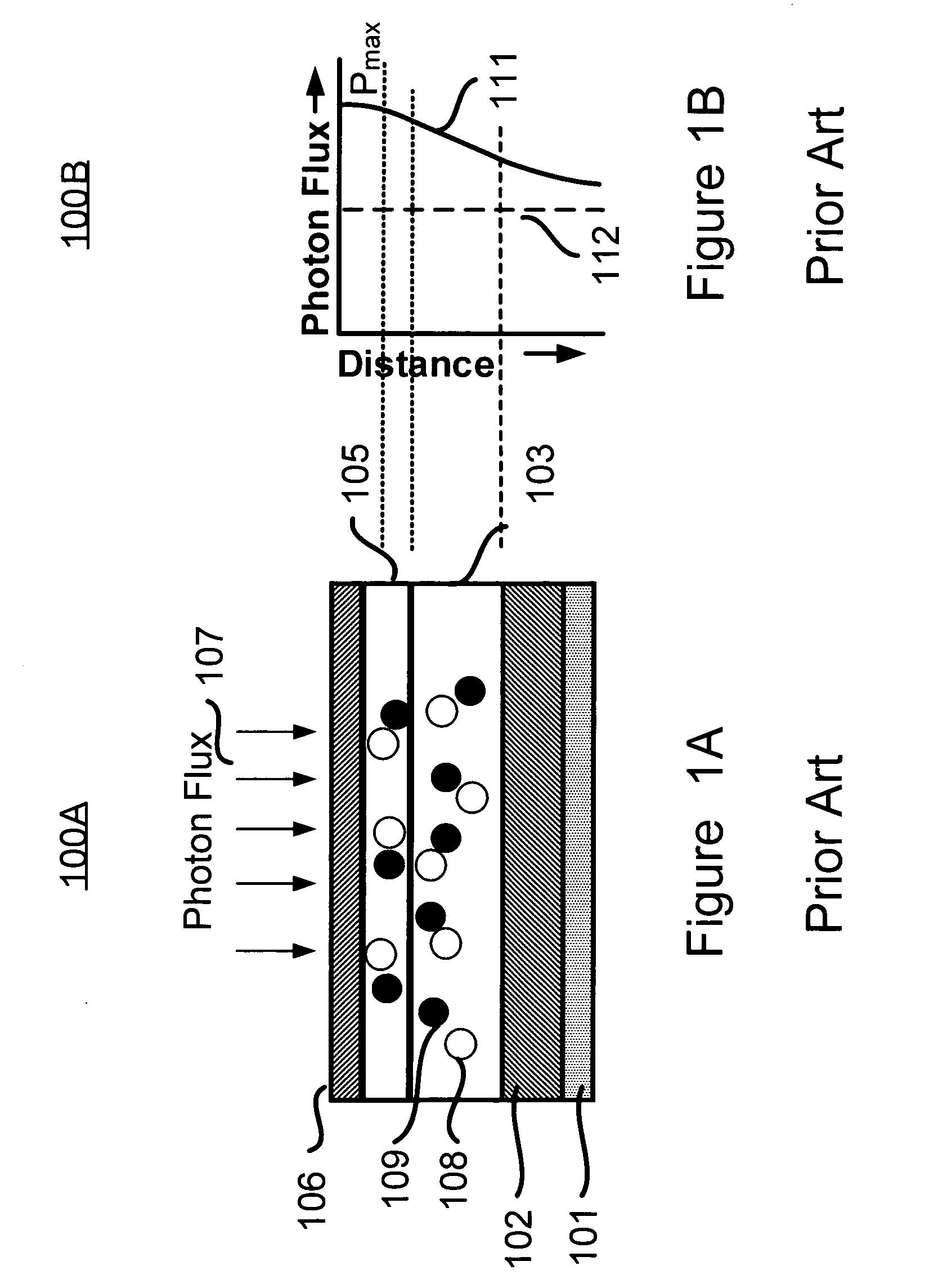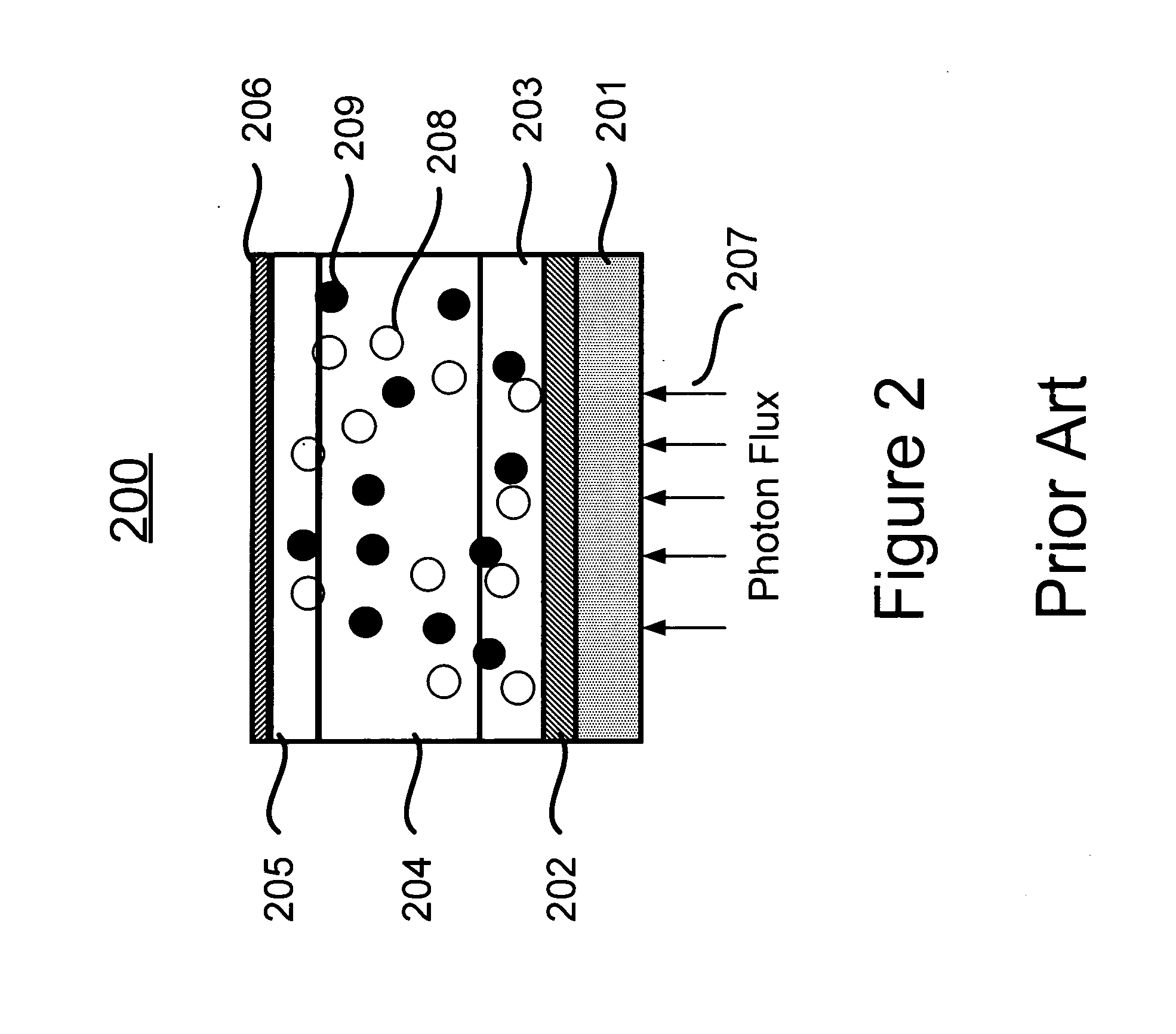Hybrid photovoltaic device
a photovoltaic device and hybrid technology, applied in the direction of semiconductor devices, electrical devices, nanotechnology, etc., can solve the problems of high-efficiency photovoltaic devices mainly using single crystalline materials, low efficiency of photovoltaic devices, and low so as to improve the collection of sunlight, reduce the cost of photovoltaic power generation, and absorb more sunlight
- Summary
- Abstract
- Description
- Claims
- Application Information
AI Technical Summary
Benefits of technology
Problems solved by technology
Method used
Image
Examples
Embodiment Construction
[0045]This invention was first presented as a proposal (Phase-I SBIR Proposal # 0741061) for a research grant to National Science Foundation on Jun. 13, 2007. The principles of the invention may be appreciated by the description of exemplary embodiments disclosed in the specification in view of the accompanying drawing FIGS. 3-11 in which like parts are indicated by like reference numerals in all the drawing figures to avoid repetitions in describing them.
[0046]FIG. 3A shows a cross sectional view (300) of an exemplary planar hybrid device according to the principles of the invention. The device structure is similar to that of a conventional planar a-Si device shown earlier in FIG. 2, wherein like parts are indicated with like reference numerals. More specifically, the hybrid device (300) constructed on a substrate (301) comprises multiple layers including a transparent conductor layer (302), a first layer (303), a plurality of nanostructures represented as 310, (only one nanostruct...
PUM
 Login to View More
Login to View More Abstract
Description
Claims
Application Information
 Login to View More
Login to View More - R&D
- Intellectual Property
- Life Sciences
- Materials
- Tech Scout
- Unparalleled Data Quality
- Higher Quality Content
- 60% Fewer Hallucinations
Browse by: Latest US Patents, China's latest patents, Technical Efficacy Thesaurus, Application Domain, Technology Topic, Popular Technical Reports.
© 2025 PatSnap. All rights reserved.Legal|Privacy policy|Modern Slavery Act Transparency Statement|Sitemap|About US| Contact US: help@patsnap.com



